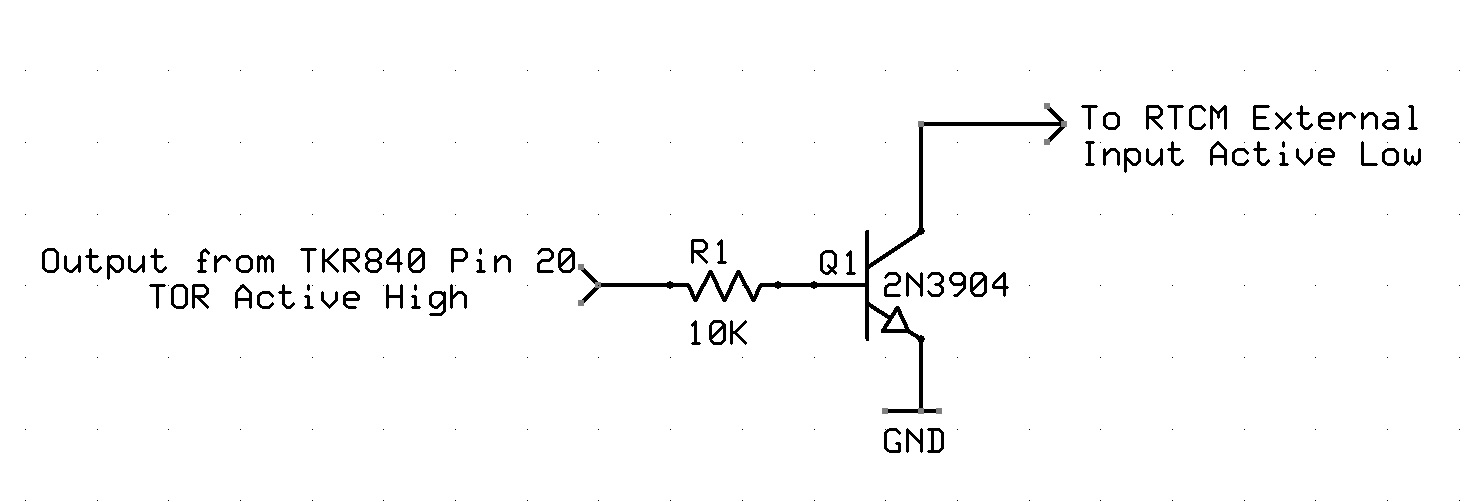Simulcast with the Kenwood TKR-840 RepeaterTKR 740 and 840 Brochure This is the repeater all my UHF simulcast sites use. The reason is that I was able to get my hands on these units at the time I was building the system. This repeater is not ideal for simulcast using Allstar due to an initial problem I had to overcome with the audio inputs on this repeater. Before I get into that issue, let us discuss what this repeater does give us. This unit is a lower power output repeater with a max output of 5 Watts with a 100 percent duty cycle. This repeater is meant to be paired with an amplifier. The repeater also has a 10 MHz reference input that is auto sensing, meaning that when the repeater sees a valid 10 MHz input it automatically uses the external 10 MHz input as its reference. The receiver front end has a considerable set of helical filters for excellent selectivity and the receiver is fairly sensitive opening at around -120 dBm. These helical filters will need to be tuned for the receive frequency you are using. Programming is accomplished using a Windows based GUI program which is Kenwood's KPG-47D. Typically, you would use the TKR-840-1 version for UHF which has a frequency range of 450-470 MHz. The repeater will not let you program it out of band without using a third party program to do so, this program can be downloaded HERE. This program will modify a saved .DAT file (your codeplug) and modify the TX and RX frequencies in it. You can then open the file up in KPG-47D and you should see the correct frequencies you want. DO NOT even click on those entry fields for the frequencies, if you do the program will flag them as out of band and will not allow you to program the radio. You can modify anything else in the program as needed. Once programmed with your frequencies you may notice either the transmitter or receiver will go out of PLL lock. If this happens you will need to open the unit up and adjust the VCO capacitor in the offending section in order to bring the unit back into lock onto your new frequency. For 2 Meters you can use the TKR-740-1 or TKR-740-3. The -3 version will not require and modifications to the codeplug to program it in the ham band. The -1 version will need to modify the codeplug if you need to program the receiver frequency lower than 146 MHz. Transmit Audio Problems The TKR-840/740 does not have a true full audio band/full deviation flat audio input as most other simulcast capable repeaters do. This is an issue since the TX audio output from the RTCM/Voter Board is a composite output of voice audio and PL/CTCSS tone. Here is a diagram of the Control IO connector of the TKR-840/740.
Looking at the diagram above you see we have 2 audio inputs, these are Pin #8 TX Data Input and Pin #9 TX Audio input. If you insert your audio into pin #8 you will get your TX audio and CTCSS tone but it will not deviate the transmitter output past 2 KHz. If you use pin #9 you will get your TX voice audio with the full 5 KHz deviation but you will find you have very little to no CTCSS tone. This is due to a 300 Hz high pass filter on pin #9 that will not allow the CTCSS tone to pass to the transmitter. There is no setting in the repeater to correct this problem and you will need to make a fairly easy modification inside the repeater. One idea I tried was to simply tie the two inputs together so you would get the best of bother worlds, unfortunately it distorts the CTCSS tone and rolls off the upper end of the voice audio spectrum making this not usable. Another idea I tried was an audio filter board that would separate the voice audio and CTCSS tone and then insert them into their respective audio inputs on the repeater. This does work but I was never happy with the audio output. There was still some loss of the upper end of the voice audio spectrum causing audio that sounded a bit "muddy" on the air. After this I decided that I would attempt to modulate transmitter at its source, the varactor diodes in the VCO. There is a test point on the TX UNIT call "MOD" that connects directly to the varactor diodes that modulate the VCO.
My solution to this was to open up the lid on the Control Board and the TX Unit or the repeater and cut the wire for pin #9 on the Control IO DB25 connector on the back of the radio. I ran a wire from Pin #9 on the DB25 connector and soldered it to the "MOD" test point on the TX Unit board. With that, I was able to input my audio on pin #9 and have full deviation of my voice audio and my CTCSS tone. The YouTube video I made solving this issue will tell more of the story. Kenwood TKR-740/840 Flat Audio for use with the RTCM Using this modification to the Kenwood TKR-840 repeater I am able to simulcast my six sites. RX Audio and CTCSS Decode and issues The RX audio that comes out of Pin #10 is what we need to use. This is gated, discriminator audio with no De-Emphasis. In my configuration I use the receiver in the base station to perform the decoding of the CTCSS tone. Since the audio is gated, the squelch circuit and adjustment pot on the RTCM/Voter Board is useless and serves no purpose. I program Pin #20 as a CTCSS detect indication output and use that to open up the squelch in the RTCM/Vote Board. It works very well with no squelch static crash at the end. Here is how I programmed the AUX IO of the repeater:
As you can see, I have it programmed as Active High. I tried using active low connected directly to the External CTCSS detect of the RTCM and found that when the output went low, it didn't go far enough low to trigger the RTCM to see it. I tried using pull down resistors but it was never consistent so I went a different route. I decided to program it as active high and use it to drive a small 2N3904 transistor. The active high would cause the transistor to conduct giving me a reliable active low to the RTCM I was using. It is very simple but reliable and has been in service for almost 5 years now.

